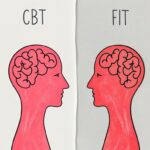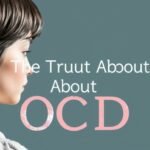Therapy remains one of the most misunderstood forms of support for mental health and personal growth. Despite its growing popularity and acceptance, many myths and misconceptions still surround the idea of seeing a therapist. These myths often prevent people from seeking the help they need or cause them to have unrealistic expectations about what therapy can and cannot do. In this article, we’ll explore and debunk some of the most common therapy myths, helping you get a clearer, more realistic understanding of what therapy truly involves.
Myth 1: Therapy Is Only for People with Serious Mental Illness
One of the biggest misconceptions about therapy is that it’s only for people who have severe mental health conditions like schizophrenia or bipolar disorder. The truth is, therapy can benefit anyone struggling with stress, anxiety, relationship issues, or simply looking to improve their self-awareness and coping skills. Many people visit therapists during periods of transition, grief, or general life challenges even if they don’t have a formal diagnosis.
Therapy offers tools and strategies that help with everyday life difficulties just as much as it does with more serious conditions. This means it’s not just for «mental illness» – it’s for anyone wanting to feel better and understand themselves more deeply. By normalizing therapy for all kinds of emotional struggles, we open the door for more people to get the support they deserve.
Myth 2: Going to Therapy Means You’re Weak or “Broken”

The stigma surrounding therapy often labels those who seek help as weak or unable to handle their problems on their own. This is far from the truth. Choosing to attend therapy is actually a strong, courageous step that shows self-awareness and commitment to personal growth.
Everyone faces challenges, and asking for help is a sign of strength, not weakness. Therapy provides a safe space to explore feelings, develop resilience, and learn healthier ways of managing life’s difficulties. It’s important to shift this narrative and encourage open conversations about mental health that normalize therapy as a valuable resource rather than a shameful last resort.
Myth 3: Therapy Works Instantly – You Should See Results Right Away
One common expectation that causes disappointment is the belief that therapy provides immediate fixes. While sometimes therapy can lead to quick insights, lasting change generally requires time, effort, and patience. Therapy is a process, not a magic cure.
The journey involves building trust with your therapist, uncovering underlying issues, learning new skills, and slowly applying them to daily life. Change often happens gradually and may include ups and downs along the way. Understanding that therapy is a marathon, not a sprint, helps set realistic expectations and reduces frustration when progress seems slow.
Myth 4: Therapists Just Listen and Don’t Offer Real Advice
Another widespread myth is that therapists only listen while clients do all the work, without providing tangible guidance or solutions. In reality, therapists use a variety of techniques tailored to an individual’s needs, including giving feedback, teaching coping strategies, and helping clients develop practical plans for change.
Therapists do more than lend an ear—they actively engage in the therapeutic process to support growth. The style and approach vary depending on the therapist’s background and the client’s goals, but effective therapy is always interactive and action-oriented. Therapists aim to empower clients by equipping them with tools and insights that lead to meaningful improvement.
Myth 5: Therapy Is Just Talking About Your Childhood All the Time
While exploring childhood experiences can be an important part of therapy, it’s not the sole focus for every client or session. Therapy covers a wide range of topics such as current relationships, work stress, self-esteem, coping with loss, and future goals. Different therapeutic approaches emphasize different aspects too. For example, cognitive-behavioral therapy (CBT) often centers on present thoughts and behaviors rather than deep exploration of childhood.
Therapy adapts to what clients need most, whether that’s solving a current problem, processing past trauma, or improving emotional well-being. The idea that therapy is only about endlessly dissecting childhood is a narrow perspective that doesn’t capture how therapy can be tailored for growth across the entire lifespan.
Myth 6: Only Licensed Psychiatrists or Psychologists Can Provide Effective Therapy

People often think therapy must come exclusively from psychiatrists or psychologists, but many other mental health professionals also provide excellent therapy. Licensed clinical social workers (LCSWs), licensed professional counselors (LPCs), marriage and family therapists (MFTs), and others have specialized training and credentials to offer therapeutic services.
Different professionals might use diverse approaches or emphasize specific aspects of care, but effectiveness isn’t limited by job title alone. What’s most important is the therapist’s skill, experience, and the quality of the therapeutic relationship. Finding a good match is key to a positive therapy experience, regardless of the specific license held.
Myth 7: Therapy Is Expensive and Out of Reach for Most People
Cost can be a real barrier for many when considering therapy, and this myth exaggerates that issue by making therapy seem universally unaffordable. In reality, a wide range of options exist to make therapy more accessible. Many community clinics offer sliding scale fees based on income. Online therapy platforms provide more affordable sessions. Insurance plans increasingly cover mental health services. Some workplaces offer Employee Assistance Programs (EAPs) that include free counseling.
It’s worth researching all available options because therapy doesn’t have to break the bank. Some schools and universities also offer free or low-cost counseling. Prioritizing mental health is an investment, and with a bit of effort, most people can find services that fit their budgets.
Myth 8: Only People in Crisis Need Therapy

Crisis situations often make headlines and lead people to think therapy is only for emergencies. However, therapy is beneficial for anyone facing any kind of life challenge or looking to enhance their mental wellbeing. Waiting for a crisis before seeking help can prolong suffering and make recovery harder.
Many people use therapy as a preventive tool—to build skills and resilience that help avoid future crises. Therapy can also help people find clarity, improve relationships, boost confidence, and create a more balanced life. It’s proactive, not just reactive.
Myth 9: If Therapy Doesn’t Work Quickly, It Means Something Is Wrong with You
Sometimes clients get discouraged if progress feels slow or if therapy isn’t a perfect fit initially. This can lead to feelings of self-doubt — as if they are «broken» or therapy isn’t meant for them. The fact is, therapy is highly personal and complex. Different approaches work better for different people, and sometimes several attempts or therapists may be needed to find the right match.
Therapy is also influenced by timing, readiness to change, outside circumstances, and the therapeutic alliance. If one therapist or method doesn’t seem to work right away, that doesn’t mean you’ve failed or should give up. Trying different approaches and being patient often leads to better long-term results.
Myth 10: Therapy Is Only About Talking and Does Not Include Homework or Activities
Traditional portrayals of therapy often show just talking, but many modern therapeutic approaches incorporate practical assignments and exercises. For example, cognitive-behavioral therapy (CBT) usually includes «homework» such as journaling, practicing relaxation exercises, or tracking moods and thoughts.
These activities extend the work beyond the session and empower clients to apply new skills in real life. Therapy can also include art therapy, movement, role-playing, or mindfulness practices depending on the therapist’s orientation. This myth underestimates the active, collaborative nature of effective therapy.
Tools and Approaches Common in Therapy
Before concluding, it’s helpful to highlight some common tools and approaches therapists use, showing how varied and personalized therapy really is. Understanding these can demystify therapy and help you feel more comfortable seeking support.
| Therapeutic Approach | Description | Common Uses |
|---|---|---|
| Cognitive-Behavioral Therapy (CBT) | Focuses on identifying and changing negative thought patterns and behaviors. | Anxiety, depression, stress management |
| Psychodynamic Therapy | Explores unconscious patterns and past experiences impacting current life. | Relationship issues, self-understanding |
| Humanistic Therapy | Emphasizes personal growth and self-actualization through empathy and support. | Self-esteem, life transitions |
| Mindfulness-Based Therapy | Incorporates meditation and awareness practices to manage stress and emotions. | Stress reduction, chronic pain, anxiety |
| Family or Couples Therapy | Focuses on communication and dynamics within relationships or family systems. | Conflict resolution, relationship problems |
How to Choose the Right Therapist and Approach
Finding the right therapist and therapy method can feel overwhelming, especially for those new to the process. Below are some simple steps to help you navigate this important decision:
- Identify your goals: Reflect on what you want to work on—your mood, relationships, self-understanding, etc.
- Research specialties: Some therapists specialize in trauma, anxiety, couples work, or specific methods.
- Check credentials: Ensure the therapist is licensed and qualified.
- Schedule a consultation: Many therapists offer a free initial session to see if it’s a good fit.
- Ask questions: Don’t hesitate to ask about their approach, experience, and what you can expect from therapy.
- Trust your feelings: The therapeutic relationship is crucial—feeling heard and respected matters most.
Common Therapy Myths: Quick Recap
| Myth | Reality |
|---|---|
| Therapy is only for serious mental illness. | Therapy is helpful for anyone facing challenges. |
| Going to therapy means you’re weak. | Seeking help shows strength and self-awareness. |
| Therapy provides instant results. | Therapy takes time and effort for lasting change. |
| Therapists only listen and don’t give advice. | Therapists offer guidance, strategies, and support. |
| Therapy is just about discussing childhood endlessly. | Therapy covers current issues, emotions, and future goals. |
Final Thoughts
Conclusion: Understanding the realities of therapy is essential for breaking down barriers and encouraging people to seek the support they deserve. Therapy is not shrouded in mystery or reserved only for the severely ill—it is a practical, valuable resource for anyone wanting to improve their mental and emotional wellbeing. By debunking these common myths, we hope to empower readers to approach therapy with openness, realistic expectations, and confidence. Remember, therapy is a personal journey that unfolds uniquely for each individual, and taking the step to seek help is one of the bravest and most important moves you can make in taking care of your mental health.





















Как женщина, могу сказать, что многие страхи насчёт терапии необоснованны. Это действительно помогает лучше понять себя и справиться с трудностями. Главное — найти своего специалиста и быть открытым к процессу.